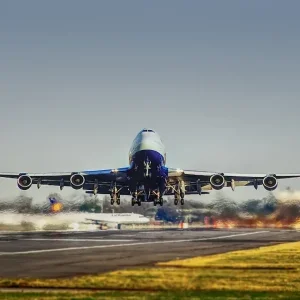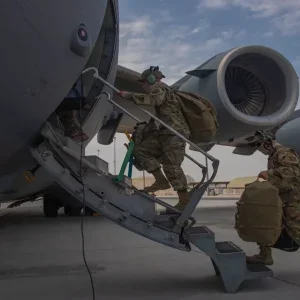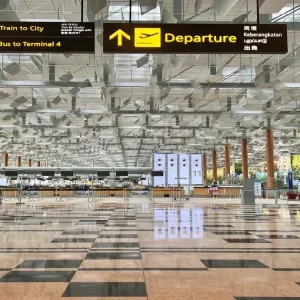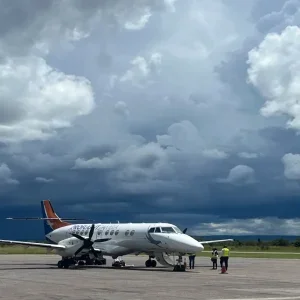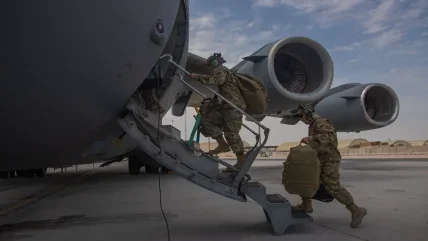
The airport sector, an essential cog in the wheel of global commerce and connectivity, finds itself increasingly entangled in the fallout of interstate armed conflicts. As geopolitical tensions flare and armed confrontations escalate, airports often become both strategic assets and unintended casualties. This article delves into the multifaceted impacts of interstate armed conflicts on the airport sector, exploring operational disruptions, economic ramifications, security challenges, and the path forward for resilience and recovery.
The Strategic Importance of Airports in Armed Conflicts
Airports as Military Targets
In times of interstate armed conflict, airports can transform from civilian infrastructure into military objectives. The strategic importance of airports cannot be overstated: they serve as crucial hubs for troop deployment, supply chain logistics, and humanitarian aid distribution. Consequently, conflicting parties may target airports to cripple an opponent’s mobility and supply lines.
For instance, during the conflict in Ukraine, several airports, including Donetsk International Airport, became focal points of intense fighting. The infrastructure sustained extensive damage, leading to prolonged operational shutdowns. Such instances underscore the dual-use nature of airports in conflict zones – their value to both civilian and military operations makes them highly vulnerable.
Disruption of Civilian Air Traffic
The ripple effects of targeting airports in conflict zones extend far beyond the immediate region. Civilian air traffic is often severely disrupted, affecting international travel and commerce. The closure of airspace and airports leads to flight cancellations, diversions, and delays, creating a domino effect across global air travel networks.
A notable example is the downing of Malaysia Airlines Flight MH17 over eastern Ukraine in 2014. This tragedy prompted widespread airspace restrictions, compelling airlines to reroute flights, thereby increasing travel time and operational costs. The repercussions of such incidents highlight the far-reaching consequences of conflicts on civilian aviation.
Economic Ramifications for the Airport Sector
Direct and Indirect Financial Losses
Airports caught in the crossfire of interstate conflicts suffer significant financial losses. Direct damages include the destruction of infrastructure, necessitating costly repairs and reconstruction. Indirect losses arise from the prolonged suspension of operations, leading to diminished revenue from landing fees, passenger services, and retail concessions.
For instance, the economic impact of the Syrian conflict on Damascus International Airport has been profound. The airport’s operational capacity was severely reduced, leading to a sharp decline in passenger numbers and cargo throughput. The financial strain extended to airlines and businesses dependent on the airport, illustrating the broader economic fallout of armed conflicts.
Insurance and Risk Management Challenges
Interstate armed conflicts exacerbate risk management complexities for airports and airlines. The heightened risk profile leads to increased insurance premiums, as insurers factor in the potential for conflict-related damages and disruptions. This escalation in insurance costs places additional financial burdens on airport operators and airlines already grappling with reduced revenues.
Furthermore, conflicts necessitate a re-evaluation of risk management strategies. Airports in volatile regions must enhance their resilience through robust contingency planning and infrastructure fortification. This entails significant investments in security measures, emergency response capabilities, and alternative operational plans to mitigate the impact of potential disruptions.
Security Challenges in Conflict Zones
Enhanced Security Measures
The threat of armed conflict necessitates stringent security measures at airports. Enhanced screening procedures, fortified perimeters, and increased surveillance are essential to safeguard passengers, staff, and infrastructure. However, implementing these measures poses logistical and financial challenges, particularly in regions with limited resources.
Airports must also collaborate closely with national security agencies and international organisations to ensure comprehensive threat assessment and response strategies. The coordination between civilian and military authorities is crucial in mitigating the risks posed by armed conflicts.
Cybersecurity Threats
In addition to physical security threats, interstate armed conflicts amplify the risk of cyber-attacks on airport infrastructure. Cyber warfare has become a critical component of modern conflicts, with adversaries targeting critical infrastructure to disrupt operations and sow chaos. Airports, with their reliance on sophisticated IT systems for flight operations, passenger services, and logistics, are prime targets for such attacks.
Recent conflicts have demonstrated the potential for cyber-attacks to cripple airport operations. For example, during heightened tensions between India and Pakistan, Indian airports experienced cyber-attacks that disrupted services and compromised sensitive data. These incidents underscore the need for robust cybersecurity protocols to protect airport systems from malicious actors.
Humanitarian and Operational Challenges
Humanitarian Crises and Airport Roles
Airports play a pivotal role in humanitarian crises precipitated by armed conflicts. They serve as essential gateways for the delivery of humanitarian aid, evacuation of civilians, and deployment of relief personnel. The logistical capabilities of airports are crucial in coordinating and executing large-scale humanitarian operations.
However, the operational challenges in conflict zones are immense. Damaged infrastructure, security threats, and disrupted supply chains complicate relief efforts. Airports must navigate these challenges to fulfil their humanitarian mission, often operating under duress and with limited resources.
Staff Safety and Operational Continuity
Ensuring the safety of airport staff in conflict zones is paramount. Employees are exposed to significant risks, including physical harm, psychological stress, and displacement. Airport operators must prioritise the well-being of their workforce through comprehensive safety protocols, psychological support, and, where necessary, relocation assistance.
Operational continuity is another critical concern. Airports must maintain a delicate balance between staying operational to support humanitarian and essential services and ensuring the safety of staff and passengers. This often involves adapting operational procedures, such as scaling down non-essential services and implementing stringent security measures.
Building Resilience and Future Preparedness
Infrastructure Fortification
To mitigate the impact of interstate armed conflicts, airports must invest in fortifying their infrastructure. This includes reinforcing terminal buildings, runways, and critical systems to withstand potential attacks. Building resilience also involves incorporating redundancy in vital systems to ensure continuity of operations even in adverse conditions.
For instance, Tel Aviv’s Ben Gurion Airport has implemented extensive fortification measures, including reinforced structures and advanced missile defence systems, to safeguard against regional conflicts. Such proactive measures enhance the resilience of airports in conflict-prone regions.
Collaborative Crisis Management
Effective crisis management in the face of interstate armed conflicts requires collaboration between airports, airlines, governments, and international organisations. Developing comprehensive crisis management plans that outline roles, responsibilities, and protocols is essential for coordinated and efficient responses.
Training and simulation exercises are valuable tools for preparing airport personnel for conflict scenarios. By conducting regular drills and scenario planning, airports can identify potential vulnerabilities and refine their response strategies. Collaboration with international bodies, such as the International Civil Aviation Organization (ICAO), can provide valuable insights and resources for enhancing crisis preparedness.
Technological Innovations
Leveraging technological innovations can significantly enhance the resilience of airports in conflict zones. Advanced surveillance systems, biometric screening technologies, and automated threat detection systems can bolster security measures. Additionally, adopting robust cybersecurity solutions is imperative to safeguard critical systems from cyber-attacks.
Unmanned aerial vehicles (UAVs) and drones can also play a crucial role in conflict scenarios. They can be used for surveillance, damage assessment, and delivering essential supplies in hard-to-reach areas. The integration of these technologies can augment the operational capabilities of airports in challenging environments.
Conclusion: Charting a Path Forward
Interstate armed conflicts present formidable challenges to the airport sector, impacting operations, security, and economic viability. However, through strategic investments in infrastructure fortification, collaborative crisis management, and technological innovations, airports can enhance their resilience and readiness.
The path forward requires a holistic approach that prioritises safety, operational continuity, and humanitarian responsibilities. By learning from past conflicts and implementing proactive measures, the airport sector can navigate the turbulence of armed conflicts and continue to serve as vital nodes of global connectivity and commerce.


